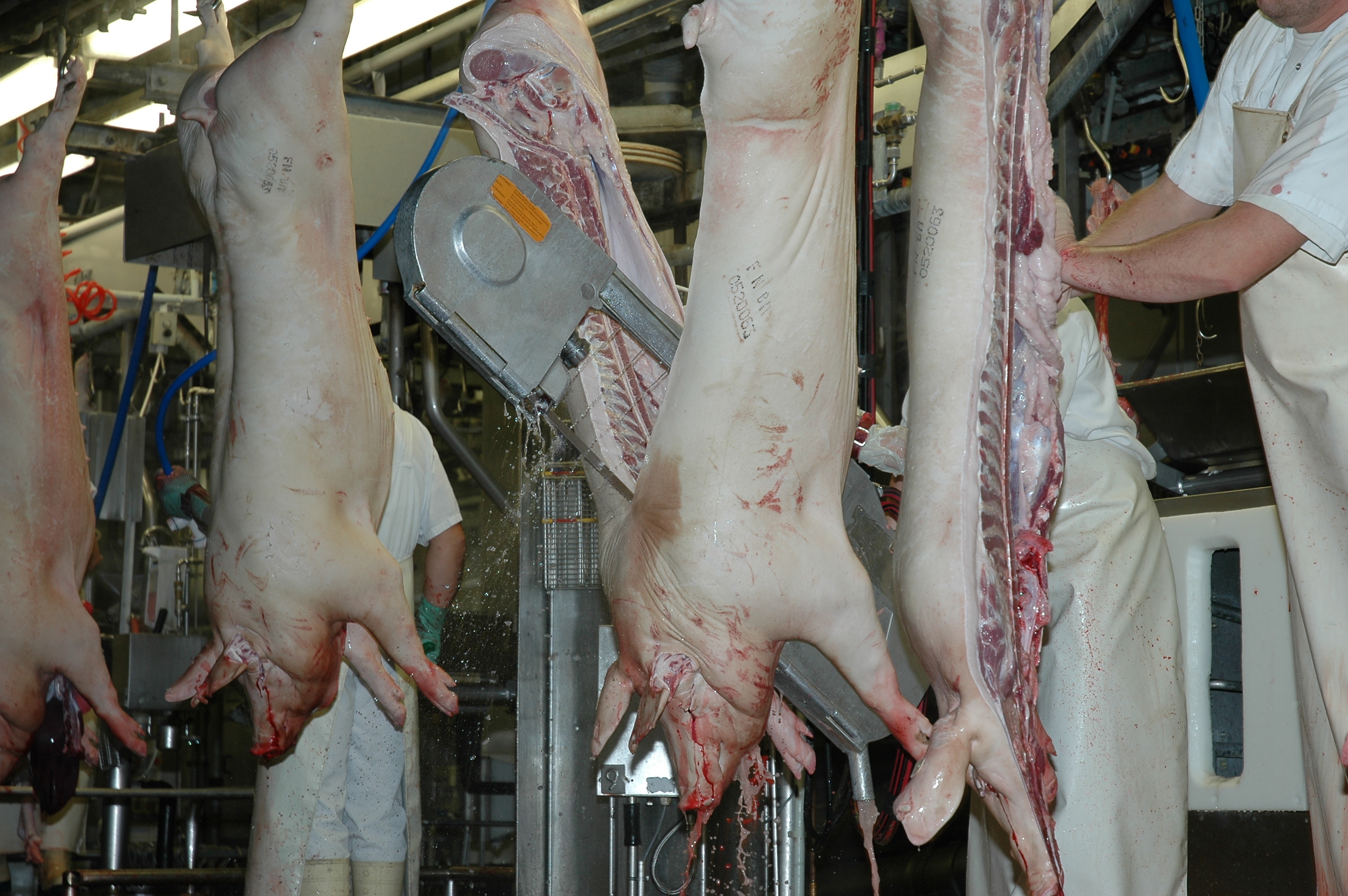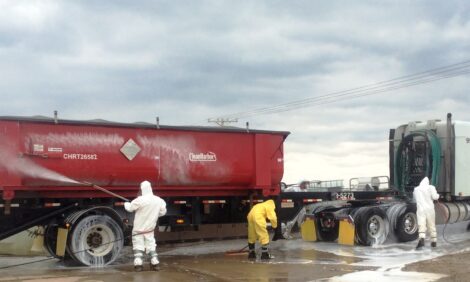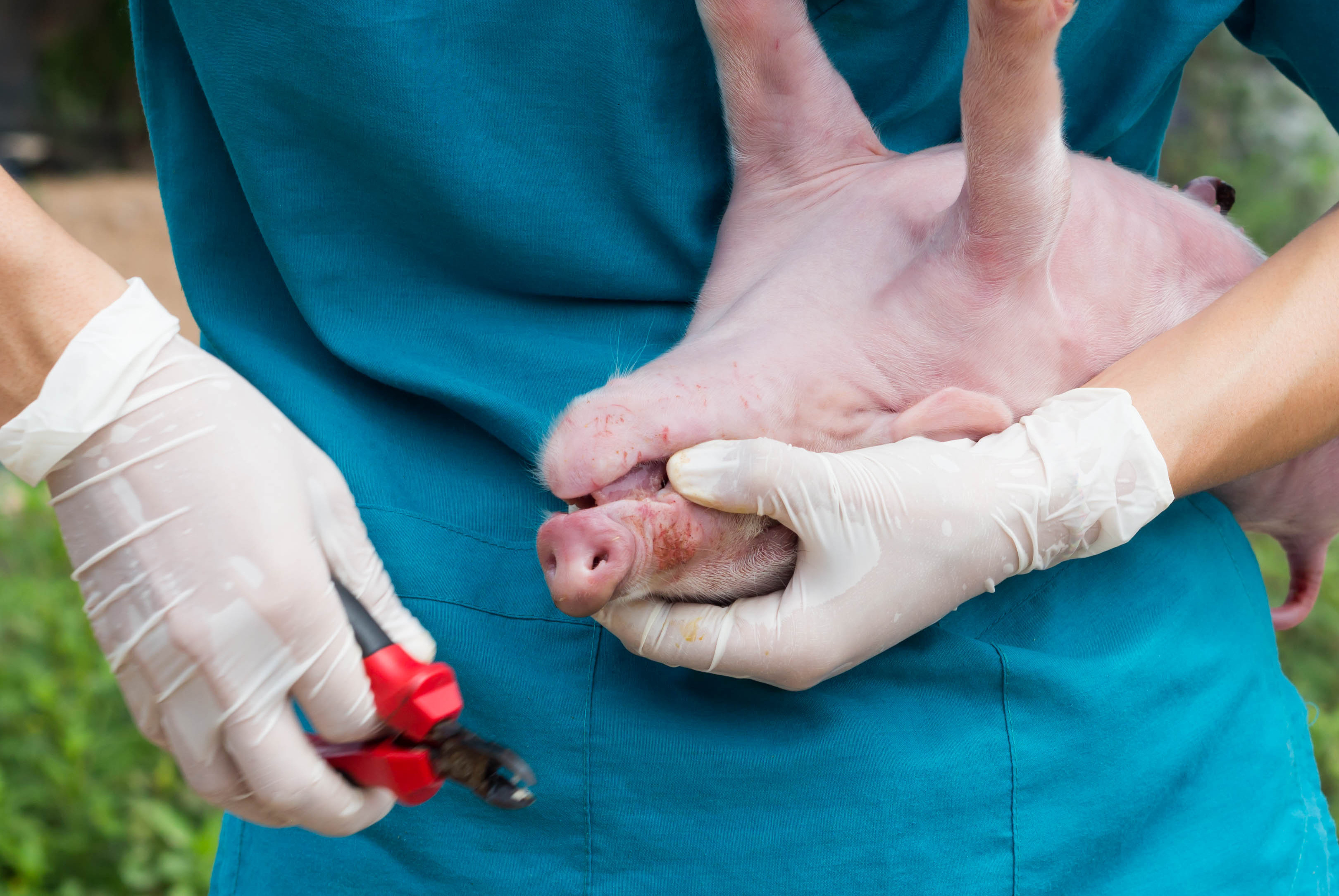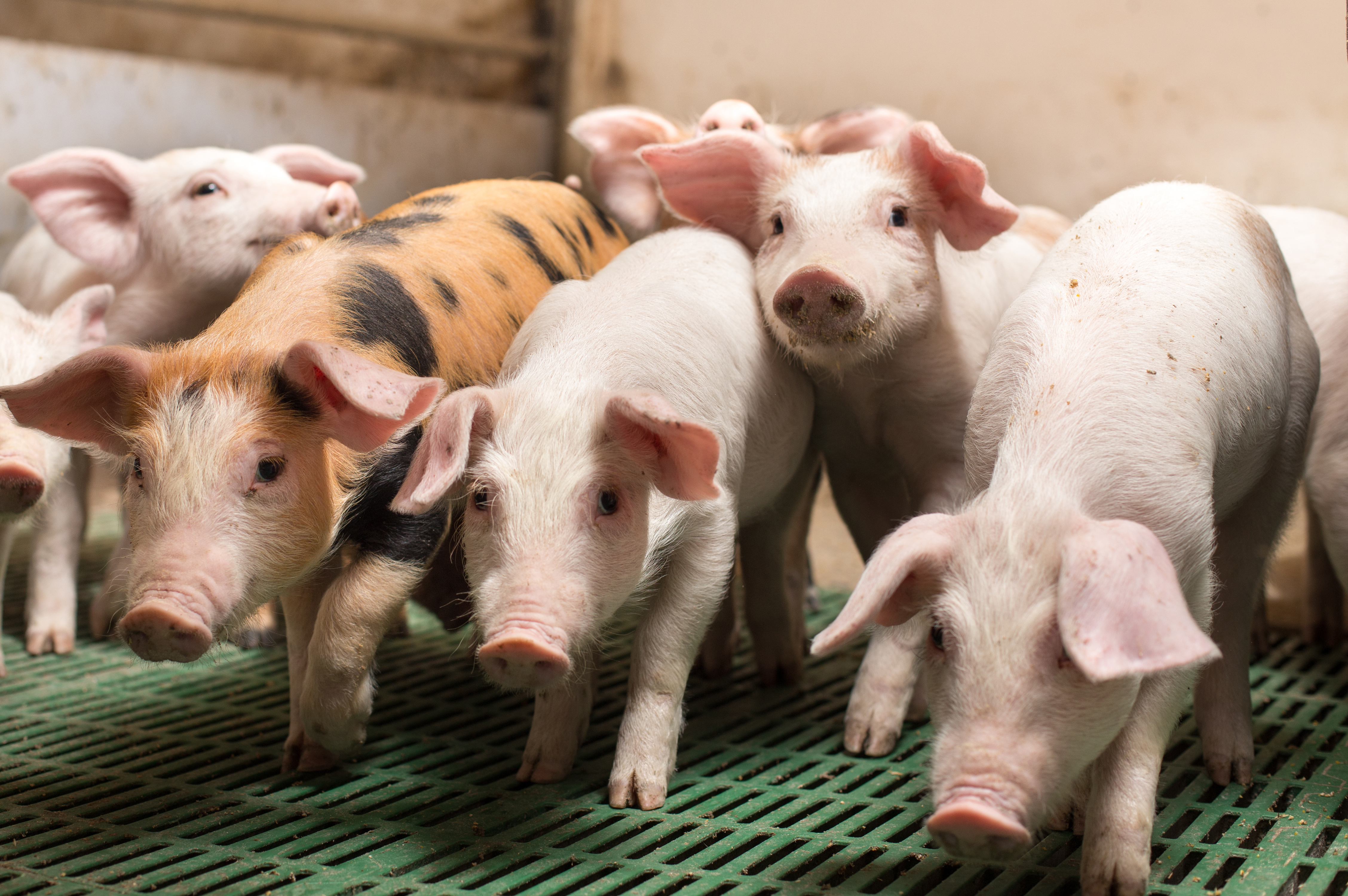



Solutions for ending painful piglet procedures: surgical castration
The 3T's Alliance has published its latest conclusions on efficient solutions to ending painful surgical castration in piglets and young pigs.The 3Ts Alliance members have drawn on collective experience and resources in identifying specific solutions for each of the painful piglet procedures. Case study examples of solutions in practice are outlined in the World Animal Protection global business case ‘Sharing Success’.
The Alliance notes the importance of avoiding surgical castration in the interest of overall animal health and welfare. The procedure causes pain and is a vector for infection and therefore a risk factor for antibiotic overuse. The Alliance also questions the routine application of surgical castration (in countries where it is performed) given the low overall prevalence of boar taint (eg. 3-5 percent of pigs at slaughter in Europe). Furthermore, the Alliance acknowledges the significant potential for automated and reliable low-cost boar taint detection solutions during processing to enable the ending of surgical castration.
Detecting boar taint
Boar taint detection methods are a key part of the solution in many markets. They can be implemented at the slaughter line to ensure any affected carcasses are separated. The human nose method of boar taint detection is often practised, but manual boar taint detection can be resource intensive. Automated sampling and detection is already implemented in Denmark. Further Danish research for more rapid detection of skatole and androstenone from fat samples on the slaughter line is underway and looks promising (takes 10 seconds to extract, 40 mins to process).
Several markets (especially in Europe, partly in Australia) already accept intact males. They detect boar taint at slaughterhouses and streamline taint-positives to suitable products and markets. Several retailers in Belgium have exercised leadership in solutions in their supply chains. Piétrain breeds (with no boar taint) and other selected genetic lines for reduced boar taint are available.

Alternatives to surgical castration
Two alternative methods to physical or surgical castration have been implemented – raising intact males (with boar taint detection at slaughter) and administering a vaccine against boar taint (a two-step vaccination against GnRH also known as immunocastration).
Managing boar behaviour – sexual and/or aggressive behaviour associated with boars - has not proved to be a problem when pigs are raised intact to a pre-pubertal weight, in well-managed systems. For males raised to heavier weights risking puberty and boar taint, the use of the vaccination against boar taint reduces unwanted sexual and/or aggressive behaviour. This can be further managed with the timing of the two (or in some cases, three) repeat vaccine applications. The European Commission has detailed a number of technical and process reports on best practice for these solutions.
Providing an overview of the economic benefits of such options is highly recommended. Commercial case studies speak to favourable outcomes (increased Feed Conversion Efficiency and Average Daily Gain, and improved meat quality for intact and vaccinated versus surgically castrated animals). A major report from the European Commission also analysed the cost-benefit ratios of these solutions with favourable outcomes in comparison with surgical castration.
Latin American industries (especially Brazil and Colombia) raise higher weight pigs and have successfully implemented the vaccination against boar taint with acceptance along the value chain. The importance of good engagement, well trained vaccination teams and quality assurance or government inspection is key to success and trust along the supply chain. There are now no questions nor complaints, the process is integrated across the industry, benefits the producers (with improved sustainability and food conversion efficiency conveying savings on total feed and associated carbon footprint) and the consumer in terms of consistent good meat quality. The economics are very favourable and industry stakeholders convey they would never revert. It is not a barrier to trade, including trade to Asia. Consumer sensitisation on vaccination against boar taint is not considered as important as an integrated and supportive value chain.
Vaccination against boar taint has also been successfully implemented vertically by a large producer in Thailand, many in Australia, Belgium and elsewhere.
Considering the ease and safety of the vaccination against boar taint, vaccine teams or staff are trained to administer injections. Risks of self-injection are reduced by using specific injector designs and the two-step vaccination process (only the second injection activates the internal process). Using vaccine company vaccinators involves minor additional cost and the process remains economically favourable.
Quality assurance around vaccination against boar taint is important. The proportion of pigs that do not respond to the vaccine is very low and risks are mitigated by checking on farm, giving an extra dose if needed, quality assurance reporting along with scrotal size detection at the point of slaughter. Some aggression may be detected around 11/12 weeks of age, which can be mitigated with good management, enrichment and if needed earlier second injection. To avoid concerns with interim traders or at slaughterhouses (in some markets), good communication and engagement is needed, noting some scrotum is expected (70 percent reduced in size) and quality assurance certificates for herds vaccinated against boar taint is highly recommended.
Retailers and European Commission reports note that the use of the term ‘vaccination’ is also preferable externally for communication of this solution. European consumer surveys reveal they are positive, if asked, about the use of ‘vaccination’, compared to surgical castration. The importance of retailer leadership was overall emphasised.

On-farm management
Mixing management and pen hygiene (avoiding fighting, lesions and pigs getting dirty with manure to reduce skatole absorption via the skin) and nutrition (high fibre, balanced protein) have been reported to reduce some boar taint in entire males.
Special feed to reduce boar taint components has also been developed, evaluated and commercially patented. It has been shown to reduce the production of skatoles and androstenone significantly. It is fed for 2-3 weeks before finishing. Economics analysed to date show a positive benefit to cost ratio as part of the solution for fresh pork markets accepting intact males. Taint detection is still required at the slaughter line.
Boar taint compounds can also exist in some female pigs at heavier weights (eg reared for Parma ham and similar). The prevention of sexual cycling in these animals often reared under extensive or semi-extensive conditions should be achieved with vaccination against boar taint and never by surgical spaying. The equivalent vaccination is already registered in Spain for this use.
Genetic engineering to block puberty and associated minor risk of boar taint is a potential solution. However, members acknowledged the plight of animals used in experimental genetic engineering research and lack of assurance on the health of genetic engineered animals. Public health concerns including the inadvertent incorporation of foreign DNA coding for antimicrobial resistance in cattle genetically engineered to be hornless was also acknowledged.
Incentives – raising intact males or use of vaccination against boar taint has production advantages in terms of performance (eg feed conversion efficiency, growth rate) and eliminating surgical castration reduces staff time, risk of infection (reducing antibiotic use and cost) and other complications.
See the World Animal Protection business case, Sharing Success, for further detail, case studies and above-mentioned EU report links.
Consumers are often not aware of painful procedures on pigs or associated risks, antibiotic use and welfare issues but World Animal Protection polling results show that when informed, they are very concerned and may change where they shop as a result. The Alliance agrees that proactive retailer leadership is increasingly expected and appreciated by other players in the value chain. Action to end surgical castration is essential to manage risk of association with negative welfare practices and to meet consumer expectations.












